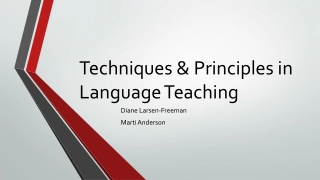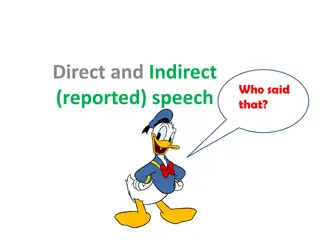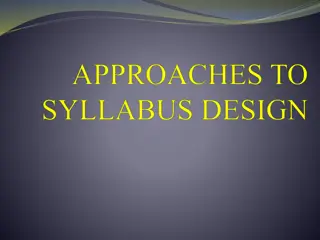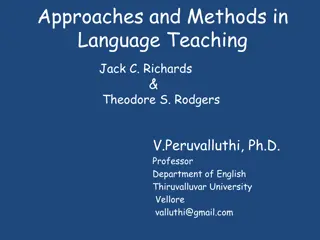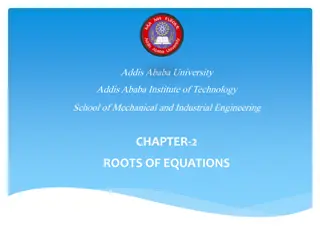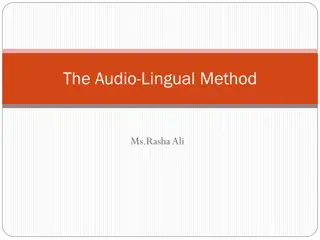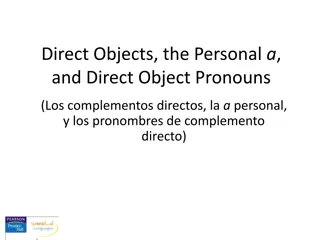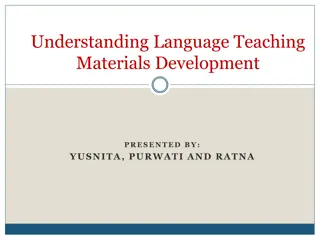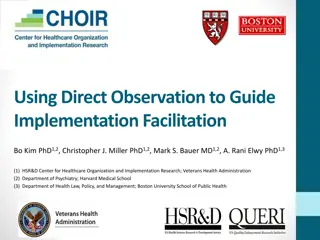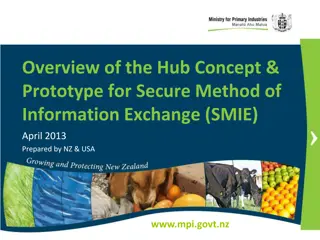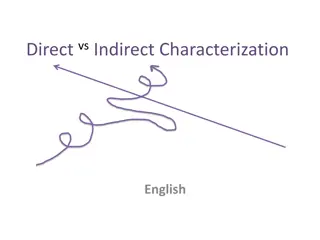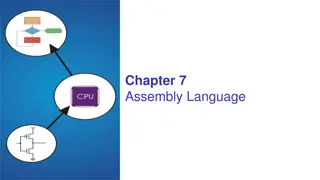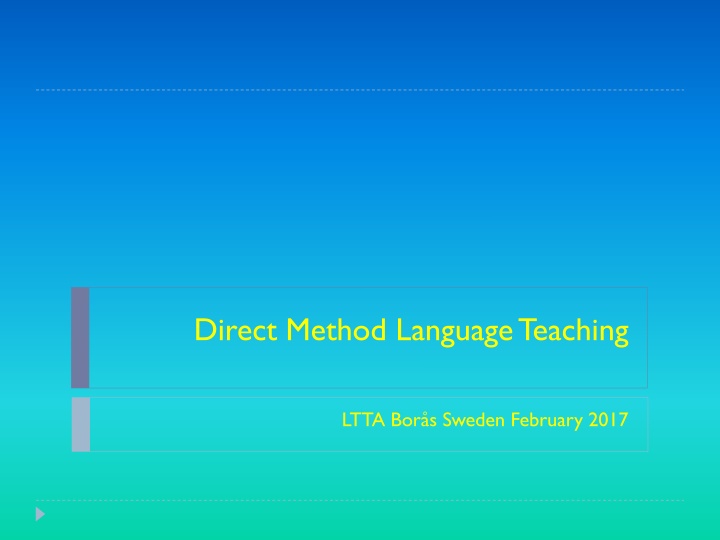
Direct Method Language Teaching: Principles and Assumptions
Explore the principles and theoretical assumptions of the Direct Method for language teaching, emphasizing learning through demonstration, vocabulary acquisition, inductive grammar teaching, and more. Discover how language is presented in context and why translation is avoided.
Download Presentation

Please find below an Image/Link to download the presentation.
The content on the website is provided AS IS for your information and personal use only. It may not be sold, licensed, or shared on other websites without obtaining consent from the author. If you encounter any issues during the download, it is possible that the publisher has removed the file from their server.
You are allowed to download the files provided on this website for personal or commercial use, subject to the condition that they are used lawfully. All files are the property of their respective owners.
The content on the website is provided AS IS for your information and personal use only. It may not be sold, licensed, or shared on other websites without obtaining consent from the author.
E N D
Presentation Transcript
Direct Method Language Teaching LTTA Bor s Sweden February 2017
Teach the language not about the language
Reaction to grammar-translation method
Language presented in context Language 1 avoided
Direct because connected directly to target language without translation
Theoretical Assumption 1 Language can be learnt through demonstration Instead of analytical explaining grammar rules, pupils are encouraged to use language naturally and spontaneously They induce grammar
Theoretical Assumption 2 The learning of additional language can be parallel to the acquisition of the first language Therefore emphasizes the importance of sounds , simple sentences and direct association of language with object and person of immediate environment- the classroom, the home
Basic Principles 1 Classroom instruction conducted exclusively in target language. The teacher should demonstrate, not explain or translate. NEVER TRANSLATE DEMONSTRATE
Basic Principles 2 Only everyday vocabulary and sentences are taught BASIC VOCABULARY IS GIVEN FIRST
Basic Principles 3 Vocabulary is taught through known words, demonstration, authentic objects (realia), pictures, and miming
Basic Principles 4 Grammar is taught inductively. There may never be an explicit grammar rule given DO NOT GIVE RULES: MAKE THEM FIGURE OUT THE RULE.
Basic Principles 5 New teaching points are introduced orally ORAL TRANSMISSION Both speech and listening comprehension are taught
Basic Principles 6 The syllabus is based on situations or topics, not usually on linguistic structures CONTEXTUAL/TOPICAL TEACHING
Basic Principles 7 Correct pronunciation is emphasized
Basic Principles 8 The aim is for pupils to learn to think in the target language as soon as possible
Basic Principles 9 The purpose of language learning is communication; therefore pupils need to learn how to ask questions as well as answer them COMMUNICATION-FIRST PREFERENCE
Basic Principles 10 The purpose of language learning is communication; therefore pupils need to learn how to negate
Techniques 1 Q & A: The teacher asks questions of any nature and the students answer
Techniques 2 Speed Repetition Movement within classroom No writing oral/aural Immediate prompts
Advantages 1 One of its positive points is that it promises to teach the language and not about the language It is a natural method which teaches language in the same way the mother tongue is acquired. Only the target language is used and the learning is contextualized..
Advantages 2 Emphasis on speech makes it more attractive for those who have needs of real communication in the target language. It introduces the teaching of vocabulary through realias.
Advantages 3 Facilitates understanding of language understanding of the target language easier due to the lack of inhibition of linguistic interferences from Language 1 Develops fluency of speech fluency of speech results in easier writing - tends to improve expression
Advantages 4 develops language sense brings words from passive vocabulary into active vocabulary bridges the gap between practice and theory facilitates alertness and participation of pupils
Criticism direct method falls short of fulfilling all needs hard for state schools to integrate ignores systematic written work and reading activities may not function in higher-level classes where translation required limited vocabulary not all words can be directly associated with their meanings lack of skilled teachers grammar is not taught systematically time consuming in creating real life situations

